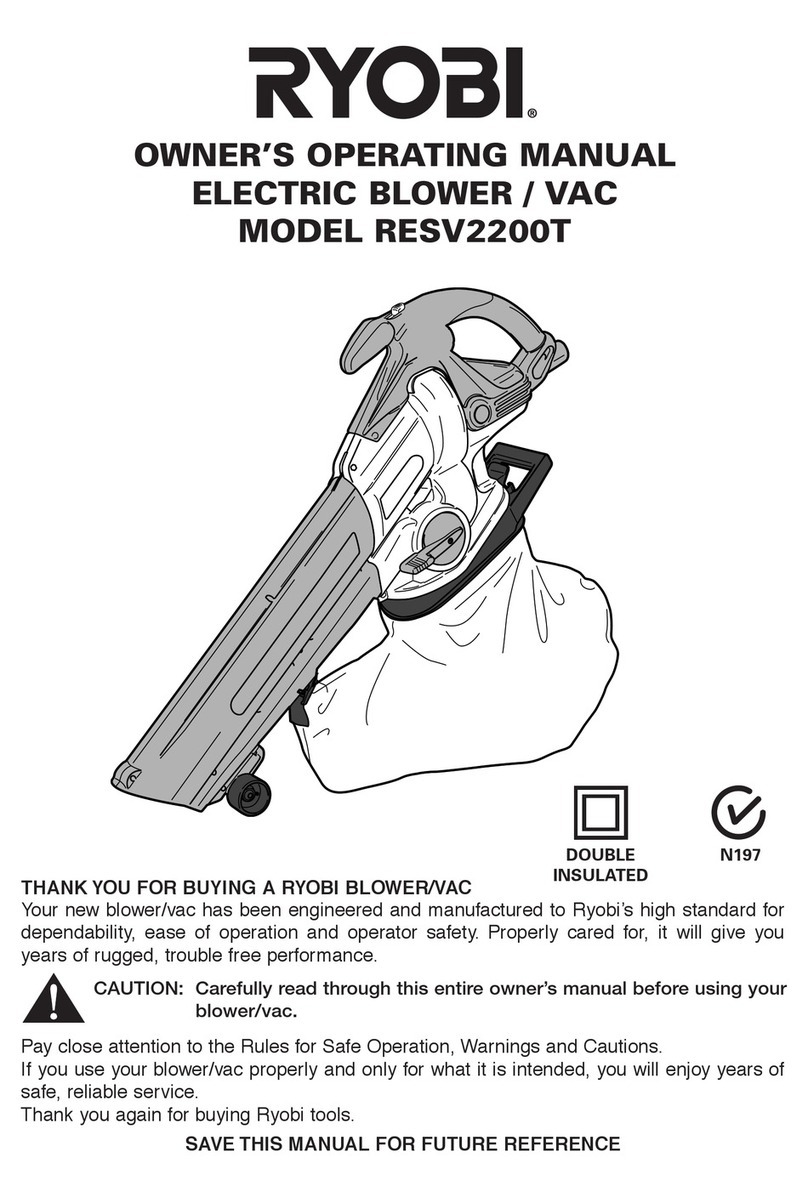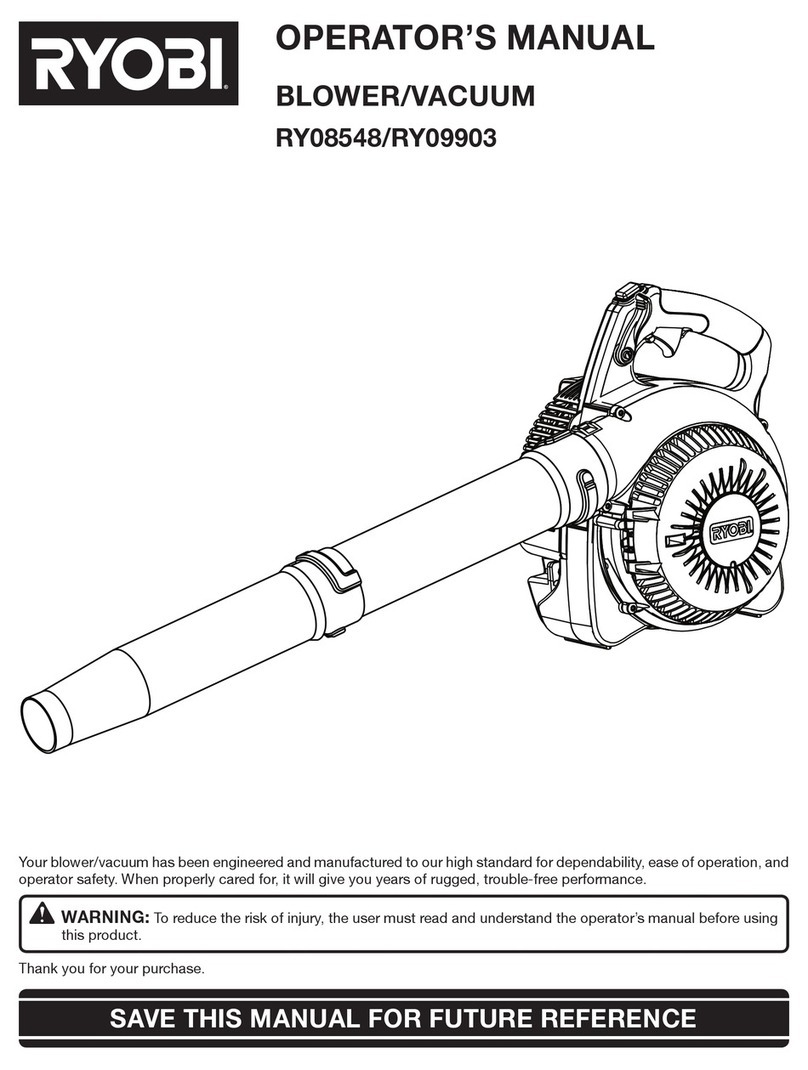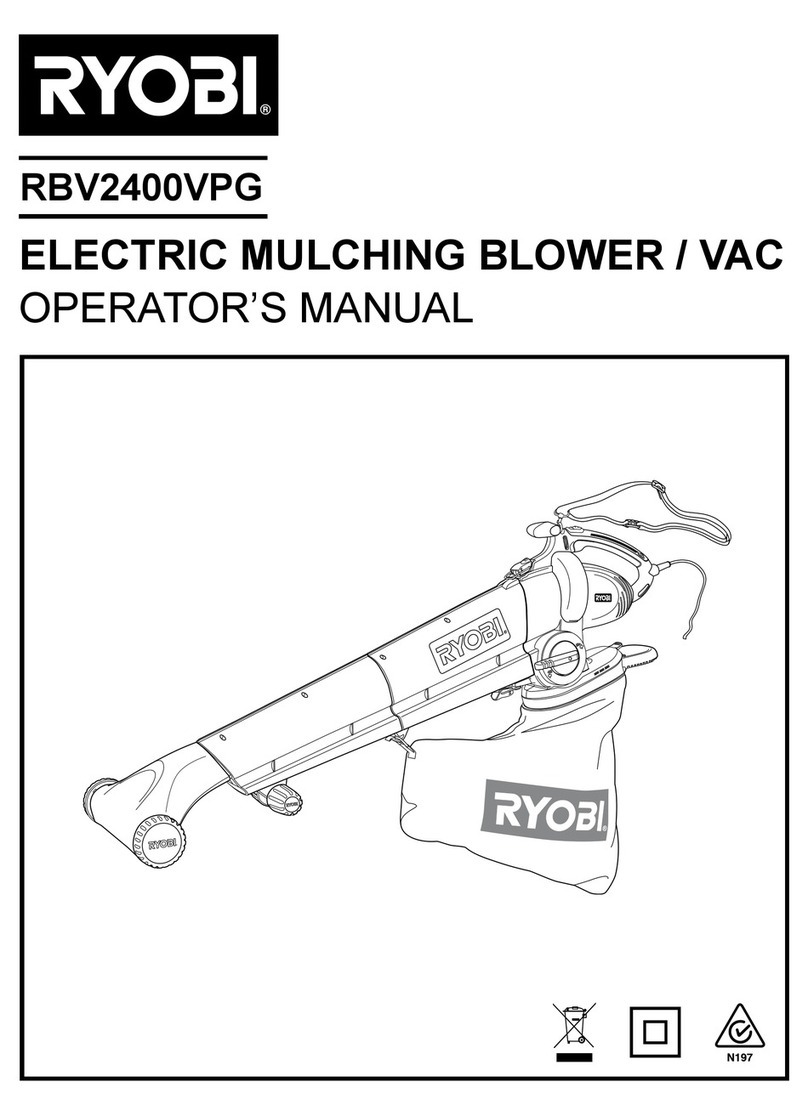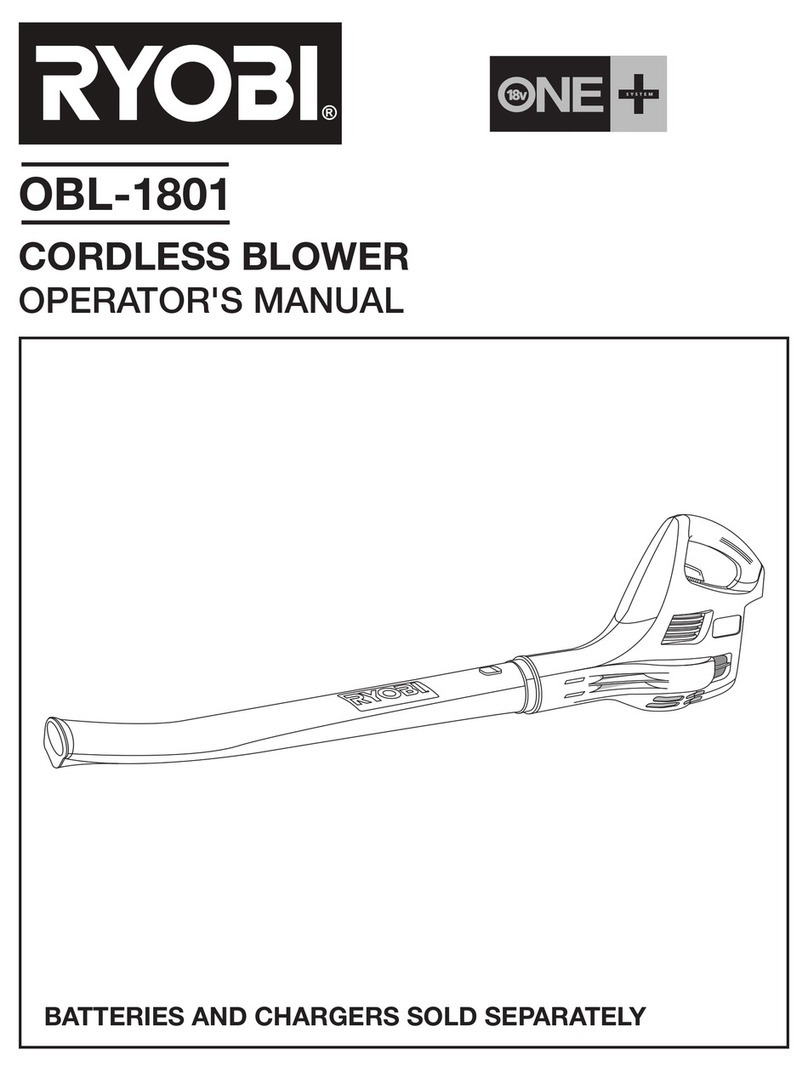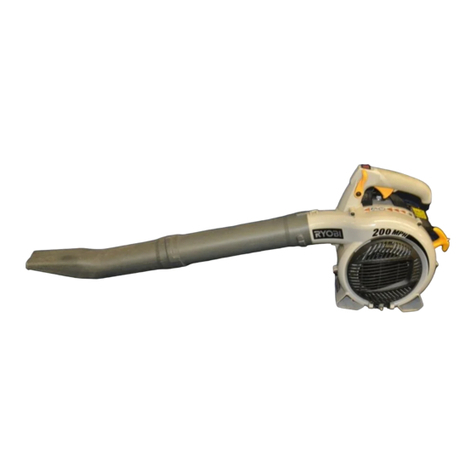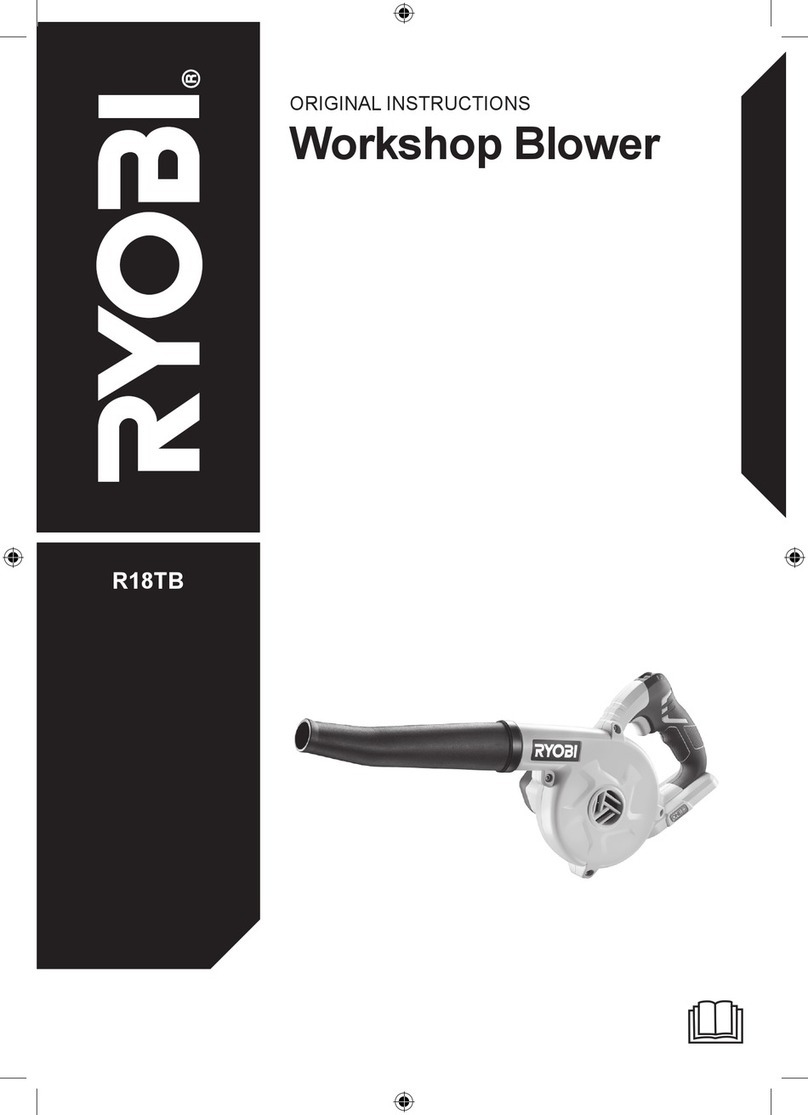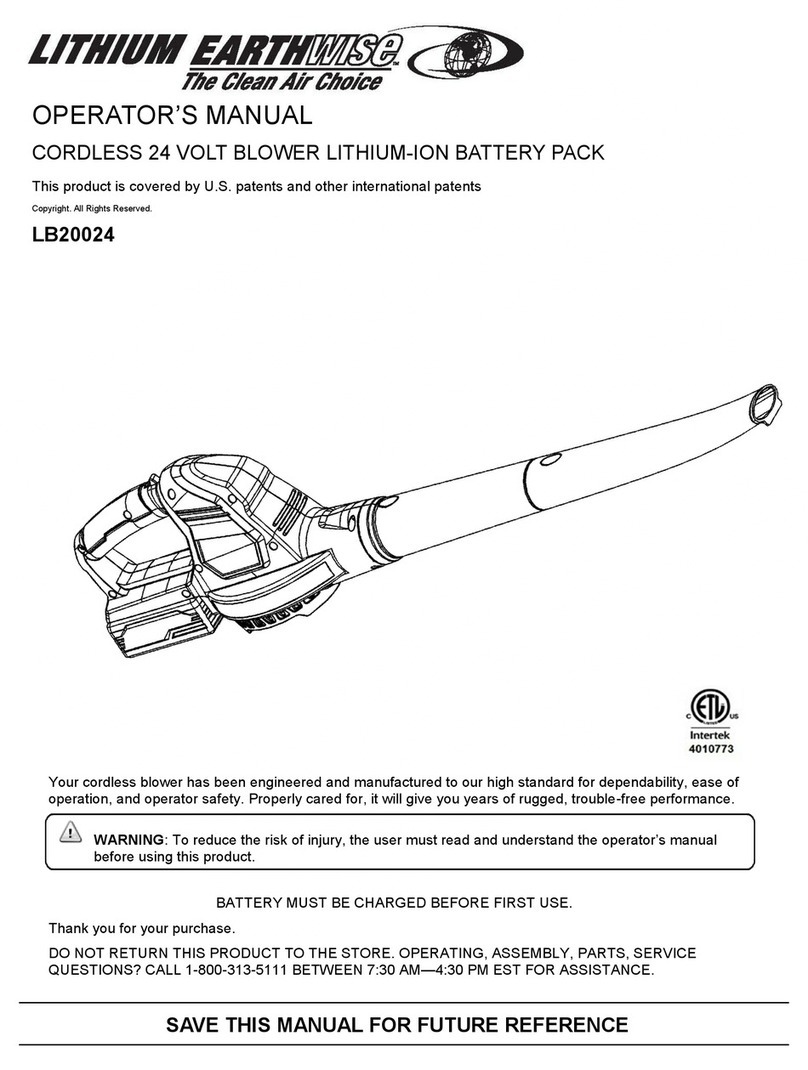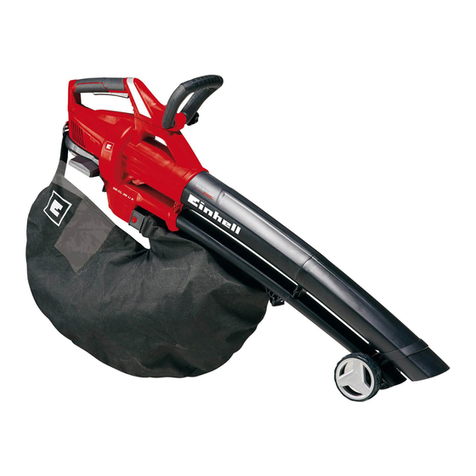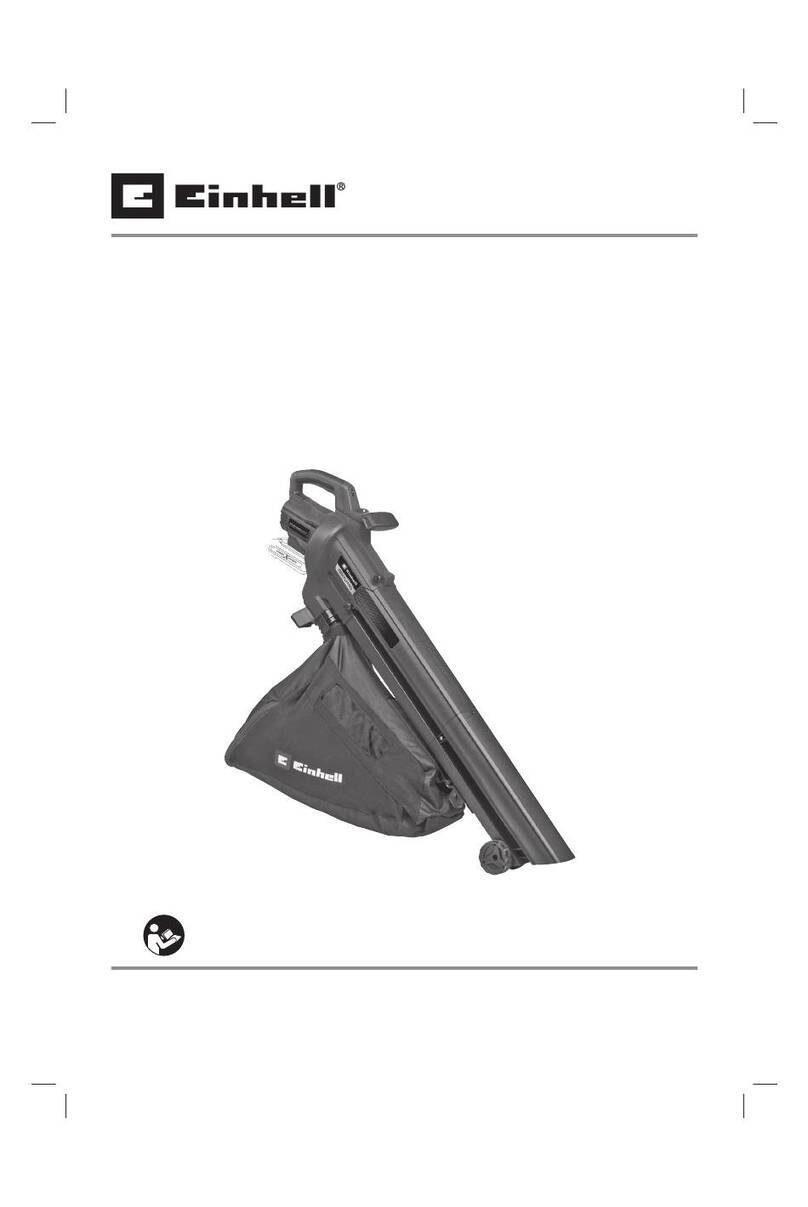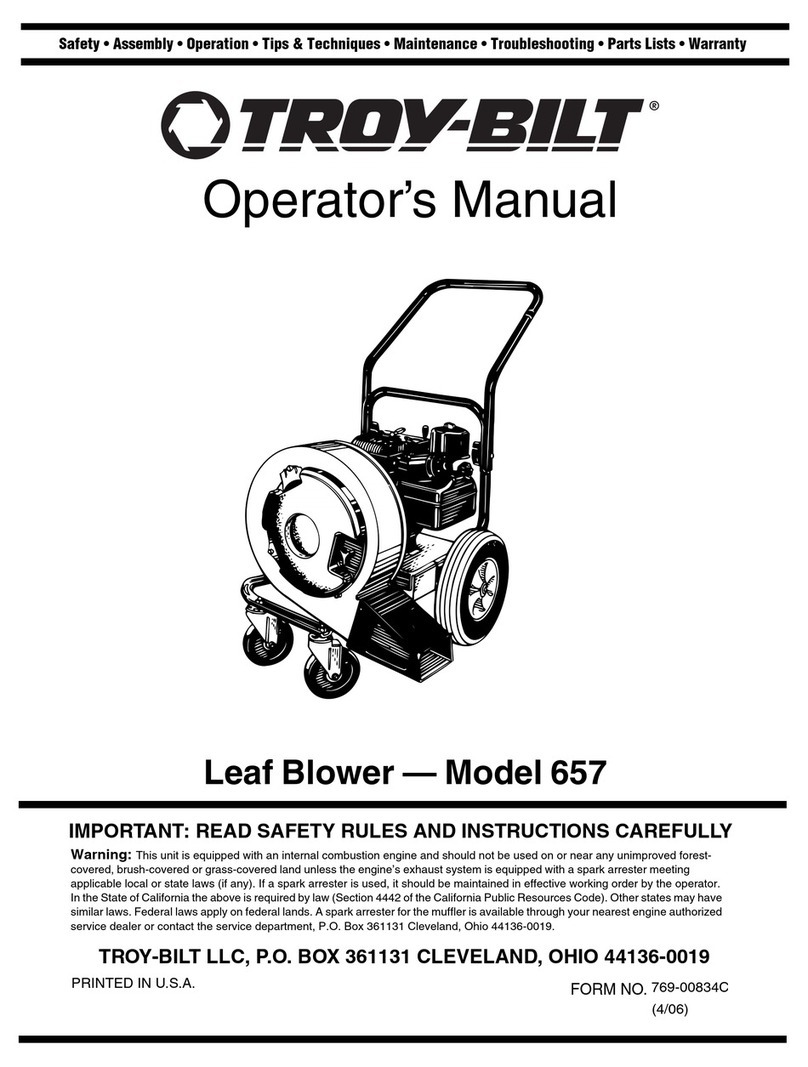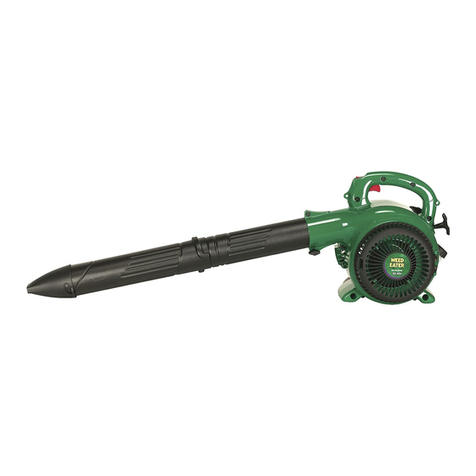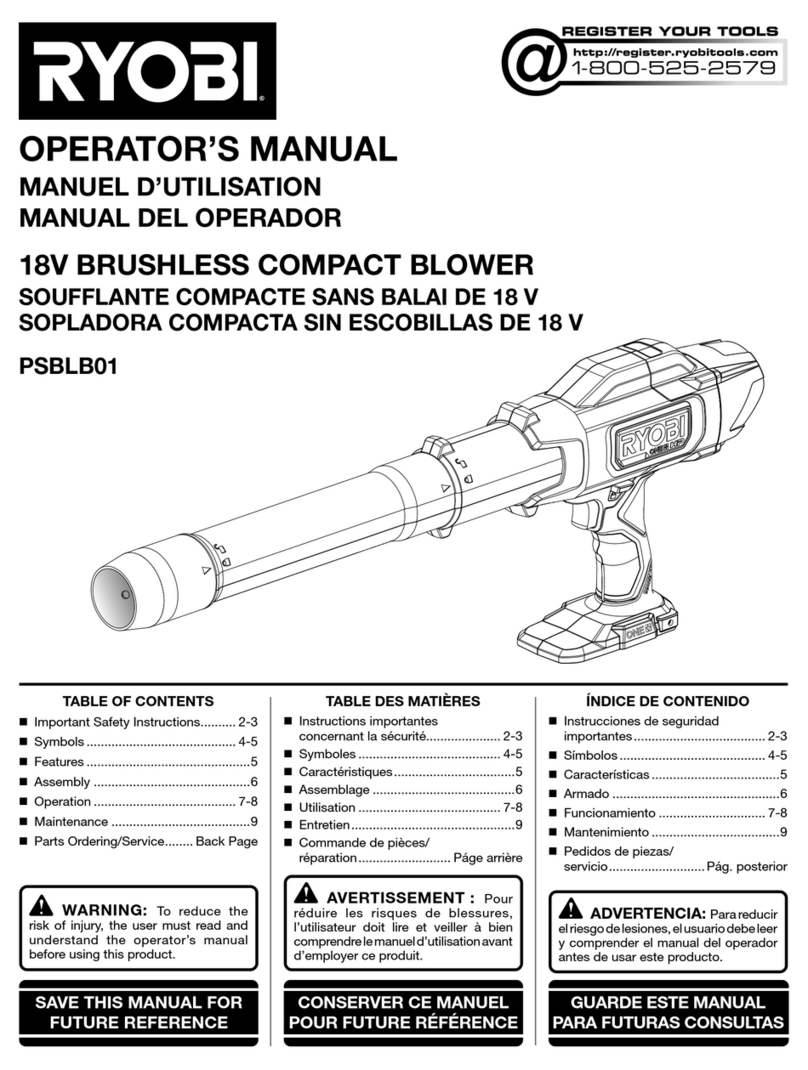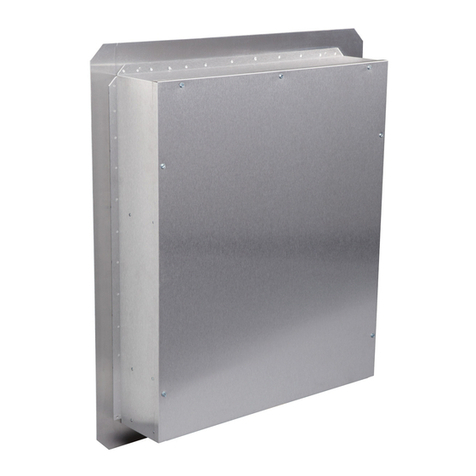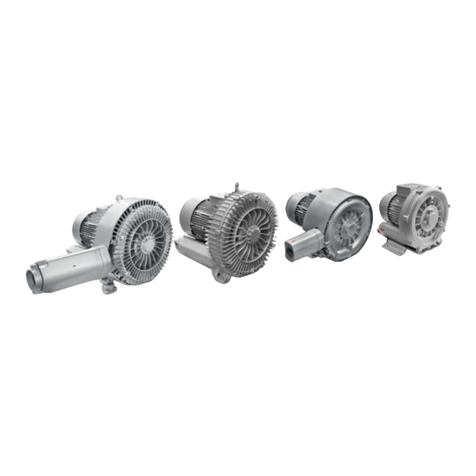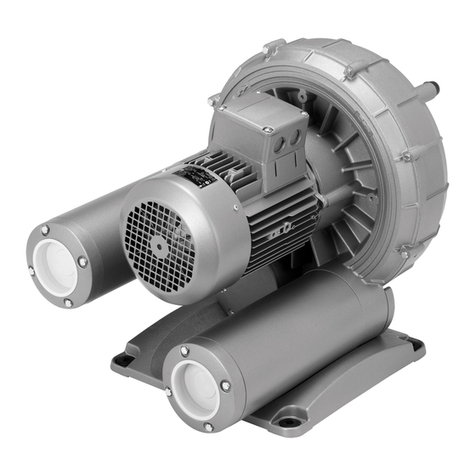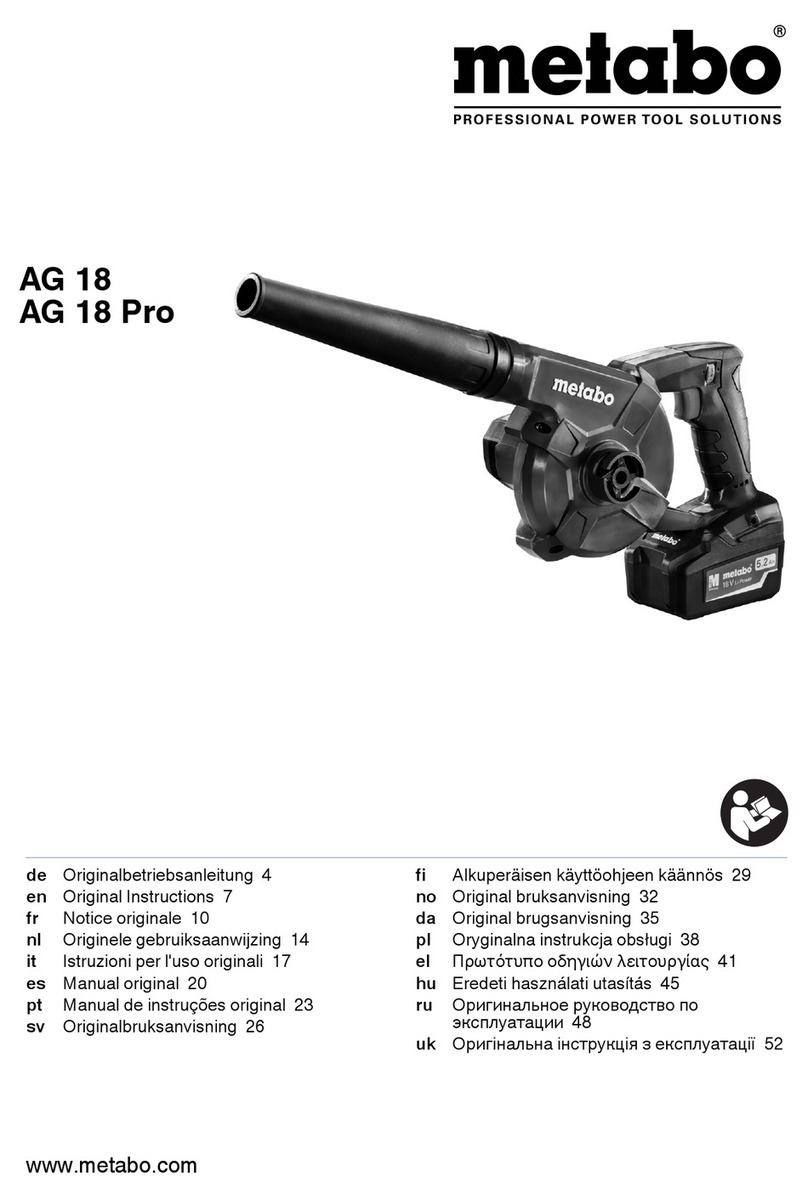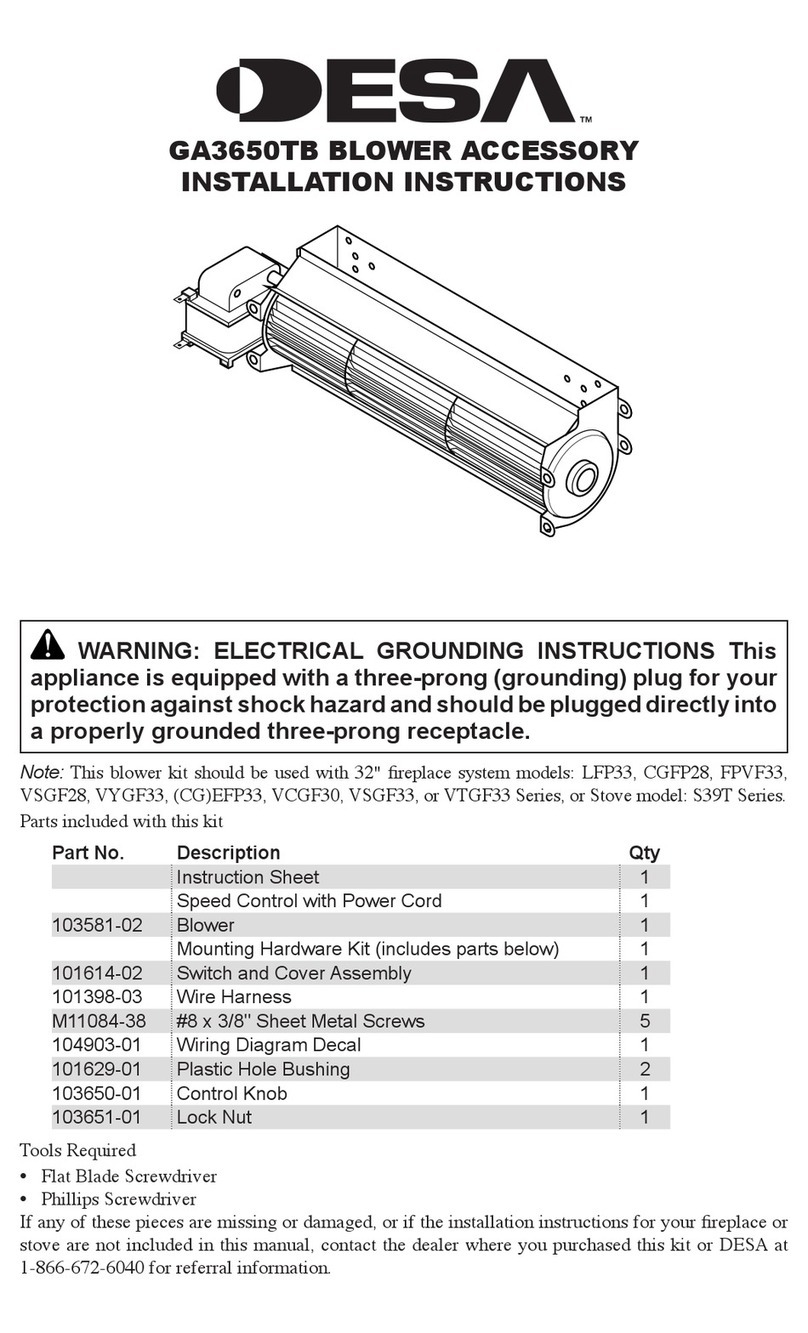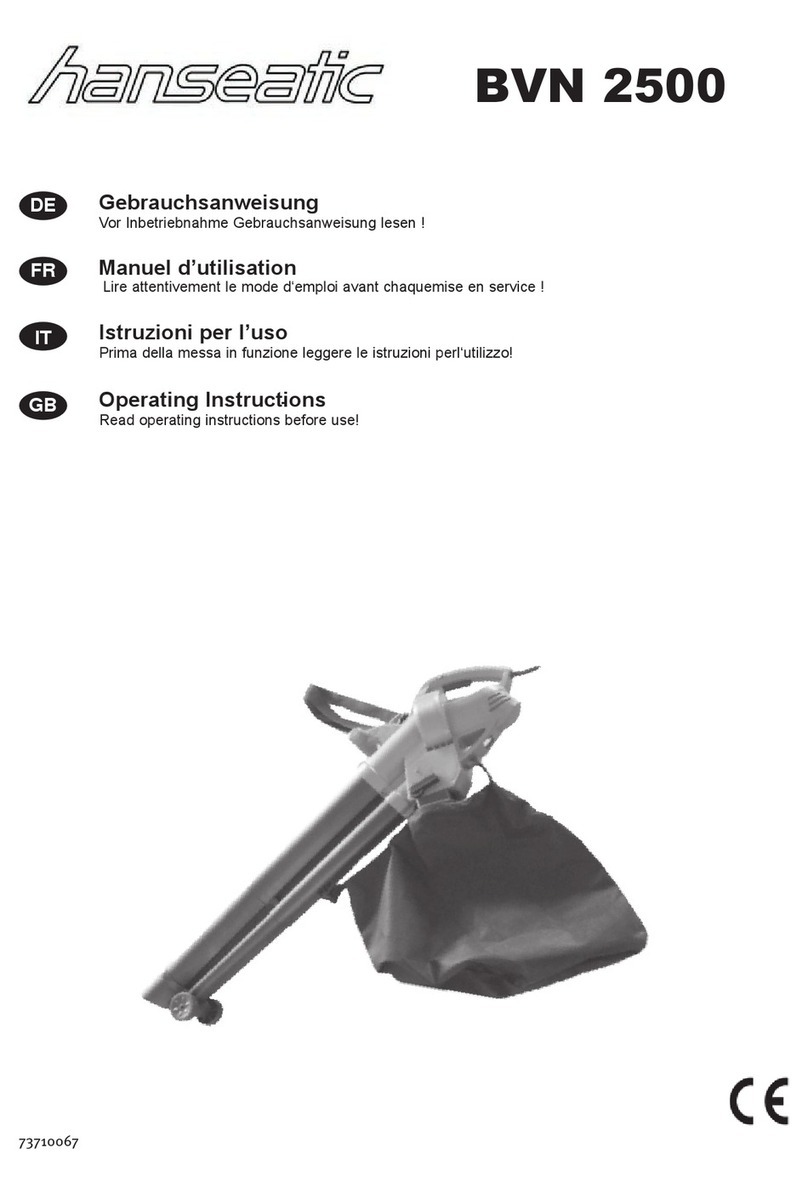7
Safety, performance, and dependability have been given
top priority in the design of your petrol blower/vacuum.
INTENDED USE
The product is only intended for use outdoors.
The product is not intended to be used by children
or persons with reduced physical, mental, or sensory
capabilities.
The product is intended for blowing a jet of air to move light
debris including leaves, grass, and other debris including
waste paper. You may use the product in driveways and
walkways.
It is intended to vacuum debris as mentioned above and
deposit it into the collection bag. It is not designed to suck
or vacuum water or other liquid.
Do not use the product in any way other than those stated.
WARNING
When using the product, the safety rules must be
followed. For your own safety and that of bystanders,
please read these instructions before operating the
product. Please keep the instruction safe for later use.
WARNING
Never allow children or people with reduced physical,
sensory or mental capabilities to operate, clean, or
maintain the product. Local regulations may restrict the
age of the operator.
GENERAL SAFETY WARNINGS
■Some regions have regulations that restrict the use of
the product. Check with your local authority for advice.
■Do not allow children or untrained individuals to use the
product.
■Ensure before each use that all controls and safety
devices function correctly. Do not use the product if the
off switch does not stop the engine.
■Never start or run the engine in a closed or poorly
ventilated area; breathing exhaust fumes can kill.
■Clear the work area before each use. Remove all
objects such as rocks, broken glass, nails, wire, or
string that can be blown a considerable distance by
high velocity air.
■Wear full eye and hearing protection while operating
the product. The product is extremely noisy, and
permanent hearing injury may result if precautions
to limit exposure, reduce noise, and wear hearing
protection are not strictly adhered to.
■Wear heavy long trousers, boots, and gloves. Do not
wear loose fitting clothing, short trousers, jewellery of
any kind, or use with bare feet.
■Secure long hair so it is above shoulder level to prevent
entanglement in moving parts.
■Beware of thrown objects; keep all bystanders, children,
and pets at least 15 m away from the work area.
■Operate the product only at reasonable hours – not
early in the morning or late at night when people might
be disturbed.
■Use rakes and brooms to loosen debris before blowing/
vacuuming.
■Never operate the product in an explosive atmosphere.
■Do not use this product when you are tired, ill, or under
the influence of alcohol, drugs, or medication.
■Do not operate the product in poor lighting. The
operator requires a clear view of the work area to
identify potential hazards.
■Use of hearing protection reduces the ability to hear
warnings (shouts or alarms). The operator must pay
extra attention to what is going on in the working area.
■Only use enough throttle (power) to complete the task,
this will reduce the potential for injury caused by noise
and vibration.
■Operating similar tools nearby increases both the risk
of hearing injury and the potential for other persons to
enter your working area.
■Keep firm footing and balance. Do not overreach.
Overreaching can result in loss of balance or exposure
to hot surfaces.
■Keep all parts of your body away from any moving part.
Rotating impeller blades can cause severe injury. Stop
the engine and ensure impeller blades have stopped
rotating before opening the vacuum door, installing/
changing tubes, and opening or removing the debris
bag.
■Do not touch the area around the muffler or the engine
of the product; these parts get very hot during operation.
■Inspect the product before each use. Check for loose
fasteners, fuel leaks, etc. Make sure all guards and
handles are properly and securely attached. Replace
any damaged parts before use.
■Be aware of left-handed, threaded fasteners (when
fitted).
■Never run the product without the proper equipment
attached. When used as a blower, always install the
blower tubes and close the door. When used as a
vacuum, always install the vacuum tubes and vacuum
bag.
■Do not modify the product in any way or use parts
and accessories that are not recommended by the
manufacturer.
WARNING
If the product is dropped, suffers heavy impact or begins
to vibrate abnormally, immediately stop the product and
inspect for damage or identify the cause of the vibration.
Any damage should be properly repaired or replaced by
an authorised service centre.
■Stop the engine and allow it to cool down before
refuelling, storing, or transporting the product.
■For refuelling and fuel mixing, choose a well-ventilated
area away from sources of ignition (sparks, flames
etc.), and flammable materials.

